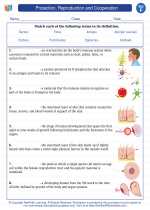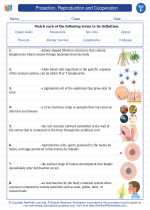Desert Ecosystems
A desert is a dry, barren area of land where little precipitation occurs and consequently living conditions are hostile for plant and animal life. Deserts can be hot or cold and are found on every continent. They can also be classified into different types, such as hot deserts, cold deserts, coastal deserts, and semi-arid deserts.
Characteristics of Deserts
Deserts are characterized by their extreme dryness, high temperatures, and limited vegetation. Some of the key features of deserts include:
- Low and unpredictable rainfall
- Extreme temperatures, with very hot days and very cold nights
- Sparse vegetation, consisting mainly of succulent plants, cacti, and drought-resistant shrubs
- Adapted animal life, such as camels, snakes, scorpions, and lizards, that can survive with limited water and food
- Wind erosion and sand dunes
Adaptations of Desert Plants and Animals
Plants and animals in the desert have evolved unique adaptations to survive in this harsh environment:
- Plants have developed deep root systems to access water stored deep underground
- Many desert plants have thick, waxy coatings on their leaves to minimize water loss
- Some animals, like camels, are able to store water in their bodies for long periods
- Many desert animals are nocturnal, staying underground or in shade during the day to avoid the scorching sun
Human Impact on Deserts
Human activities, such as urbanization, agriculture, and overgrazing, have had a significant impact on desert ecosystems. These activities can lead to soil erosion, loss of biodiversity, and desertification, which is the process of fertile land becoming desert. Conservation efforts and sustainable practices are crucial in protecting these fragile ecosystems.
Study Guide
To study the topic of deserts, consider the following key points:
- Identify and describe the different types of deserts and their locations
- Explain the unique characteristics of desert ecosystems
- List and describe the adaptations of plants and animals in the desert
- Discuss the human impact on desert environments and the importance of conservation
Understanding the complexities of desert ecosystems and the challenges they face is crucial for conservation efforts and the preservation of these unique and valuable environments.
.◂Science Worksheets and Study Guides Sixth Grade. Protection, Reproduction and Cooperation

 Worksheet/Answer key
Worksheet/Answer key
 Worksheet/Answer key
Worksheet/Answer key
 Vocabulary/Answer key
Vocabulary/Answer key
 Vocabulary/Answer key
Vocabulary/Answer key
 Vocabulary/Answer key
Vocabulary/Answer key
